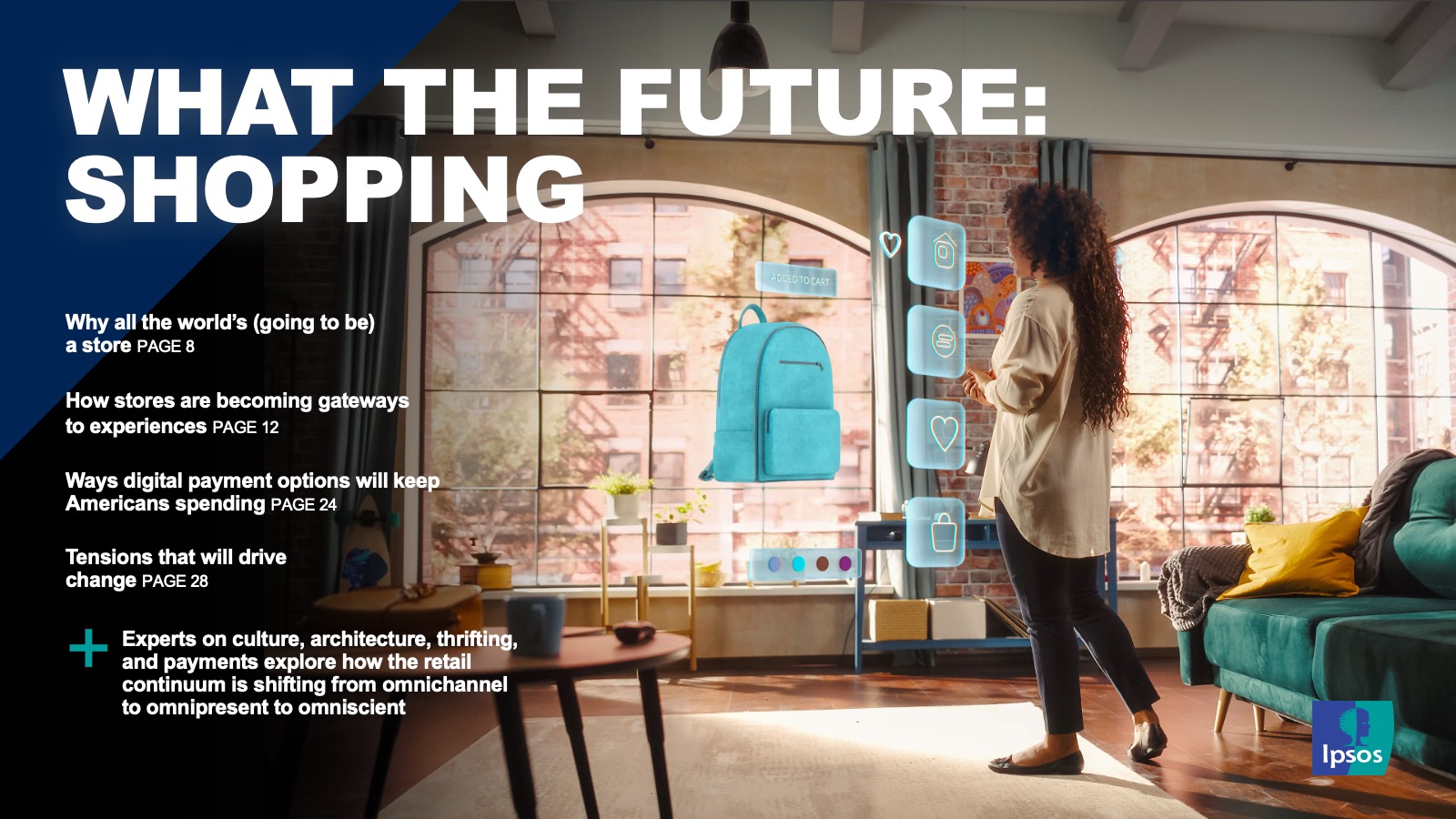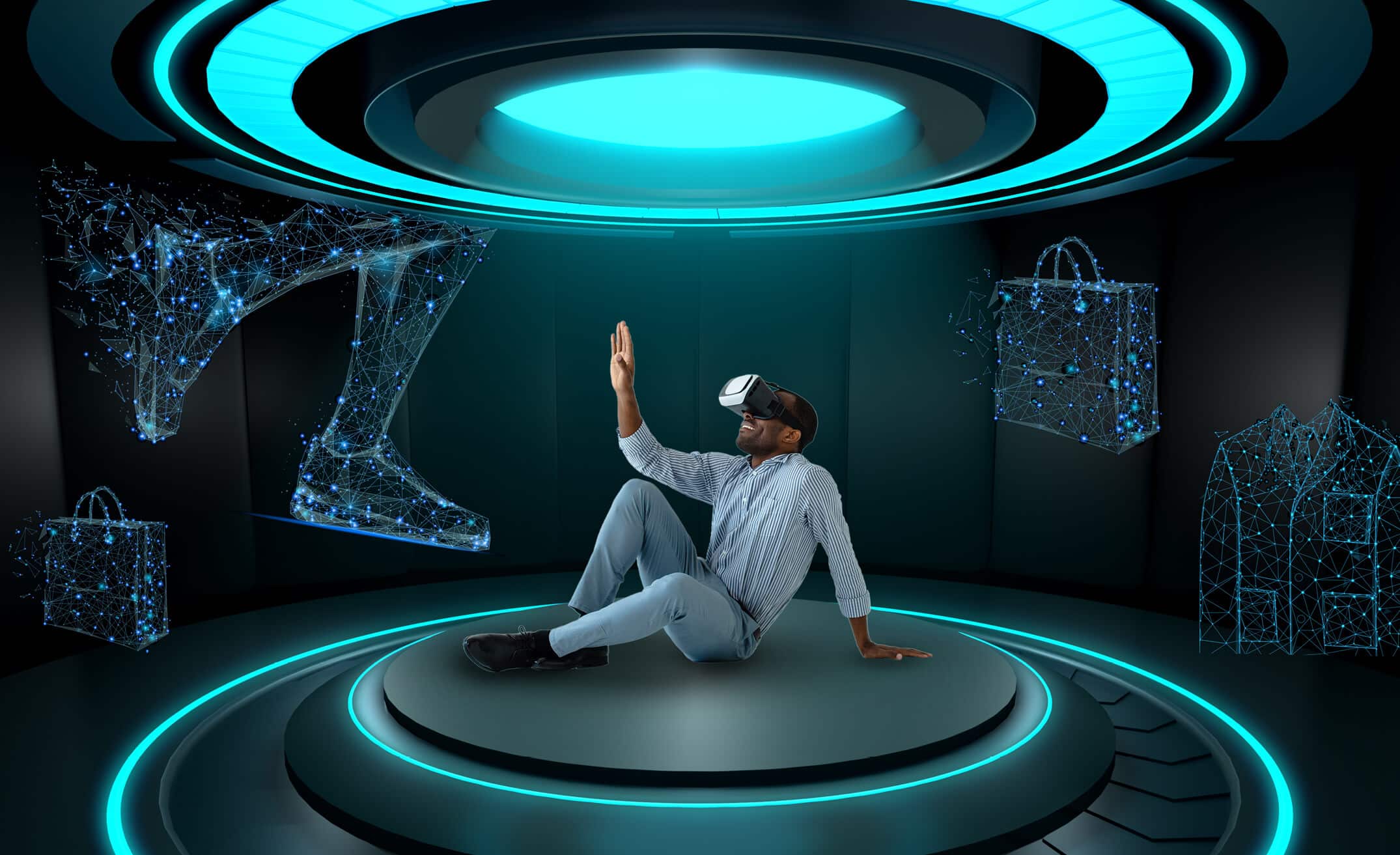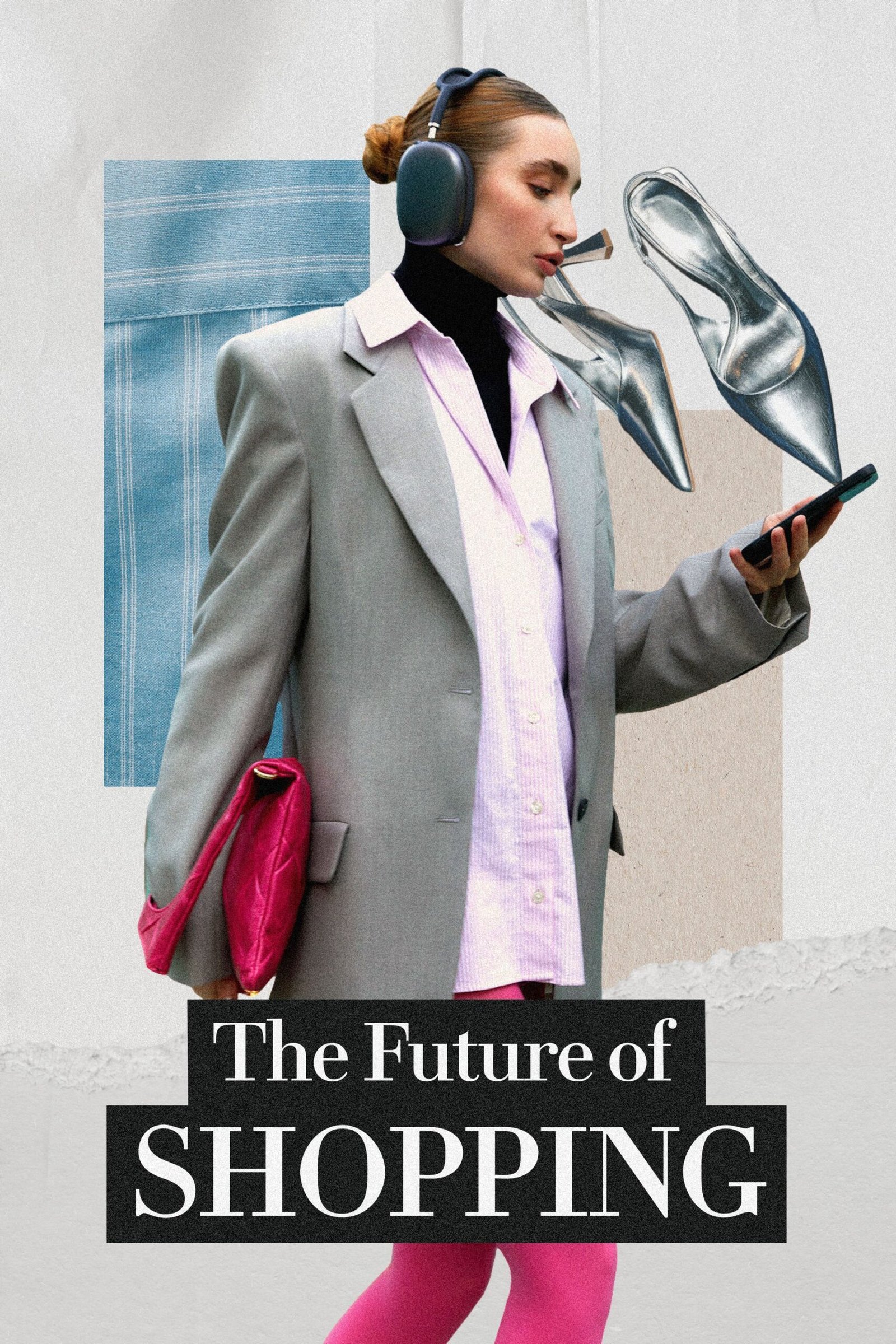Shopping has changed a lot in recent years. But what does the future hold?
The future of shopping is set to be exciting and different. Technology is making shopping more convenient and personalized. Online stores are growing, and physical stores are changing. Shopping will become more immersive with virtual reality and augmented reality. In this blog post, we will explore how these changes will shape the way we shop.
From smart stores to advanced delivery options, the future of shopping promises to be innovative and tailored to our needs. Stay with us as we dive into the trends and technologies that will define shopping in the coming years. Let’s see how we will shop in the future!
Rise Of Online Shopping
Online shopping has seen a dramatic rise in recent years. More people are choosing to shop from the comfort of their homes. This trend is not just a passing phase. It marks a significant shift in consumer behavior.
People enjoy the convenience of browsing and purchasing products online. They can do this anytime, anywhere. The rise of online shopping has brought many changes to how businesses operate.
E-commerce Growth
The growth of e-commerce has been phenomenal. More businesses are setting up online stores. They aim to reach a broader audience. Consumers have embraced this trend wholeheartedly. They enjoy the vast selection of products available online.
Statistics show a steady increase in online sales year after year. Here is a simple table showcasing the growth in online shopping:
| Year | Online Sales (in billions) |
|---|---|
| 2018 | $2.8 |
| 2019 | $3.5 |
| 2020 | $4.2 |
These numbers highlight the increasing preference for online shopping. Businesses are responding to this demand by improving their online presence. They invest in better websites and faster delivery systems.
Mobile Shopping
Mobile shopping is another key trend. More people are using their smartphones to shop online. Mobile devices offer convenience and accessibility. This makes them popular among shoppers.
Let’s look at some reasons why mobile shopping is on the rise:
- Easy access to online stores
- Fast and secure payment options
- Personalized shopping experiences
Businesses are also optimizing their websites for mobile devices. They ensure a smooth and user-friendly shopping experience. Mobile apps are also becoming popular. They offer additional features and benefits to users.
In summary, the rise of online shopping is transforming the retail landscape. The growth of e-commerce and mobile shopping are major contributors to this change. Consumers and businesses alike are adapting to this new reality.

Credit: www.ipsos.com
Personalized Shopping Experiences
Personalized shopping experiences have become a significant trend in the retail industry. Customers today expect more than just a transaction. They want a tailored experience that caters to their unique preferences and needs. This shift has led to the rise of personalized shopping, transforming how people shop both online and in physical stores.
Ai And Machine Learning
AI and machine learning are at the heart of personalized shopping. These technologies analyze customer behavior and preferences. They predict what a customer might like based on past purchases. This helps in creating a more customized shopping experience.
For example, recommendation engines use AI to suggest products. These suggestions are based on what similar customers have bought. This makes the shopping experience more relevant and engaging.
Customer Data Utilization
Customer data is crucial for personalized shopping experiences. Retailers collect data from various sources. This includes purchase history, browsing patterns, and even social media activity. By analyzing this data, they can understand customer preferences better.
Effective utilization of this data means offering personalized promotions. It also involves sending targeted marketing messages. This ensures that customers receive information about products they are genuinely interested in. It enhances their shopping journey, making it more enjoyable.
Augmented Reality (ar) In Retail
In retail, Augmented Reality (AR) is changing the way people shop. AR blends digital images with the real world. It helps customers see how products look and fit. This technology is making shopping more interactive and fun.
Virtual Try-ons
Virtual try-ons let customers see how clothes and accessories look on them. Using a smartphone or tablet, people can try on shoes, glasses, and more. This helps them decide what to buy without going to a store.
Many brands now offer virtual try-ons. Customers can choose items from home. They can see how the items fit before making a purchase. This reduces returns and increases satisfaction.
Enhanced Product Visualization
Enhanced product visualization lets customers see products in detail. AR can show a 3D model of a product. Customers can rotate, zoom, and explore the item. They get a better understanding of what they are buying.
This is great for furniture and home decor. Customers can place virtual furniture in their homes. They can see how it fits with their decor. This makes it easier to choose the right items.
| Feature | Benefit |
|---|---|
| Virtual Try-Ons | Helps customers see how items fit |
| Enhanced Visualization | Shows products in detail |
- Virtual try-ons reduce the need for physical fitting rooms.
- Enhanced visualization makes online shopping more reliable.
AR in retail is making shopping more convenient. It helps customers make better decisions. AR technology is making shopping fun and engaging.

Credit: explorerresearch.com
Sustainable Shopping Practices
The future of shopping is evolving. Consumers now prioritize sustainability. Sustainable shopping practices are becoming the norm. These practices focus on reducing environmental impact and promoting ethical choices.
Eco-friendly Products
Eco-friendly products are made with minimal harm to the environment. They use sustainable materials and processes. Examples include:
- Reusable bags
- Bamboo toothbrushes
- Organic cotton clothing
These products help reduce waste. They also lessen the carbon footprint. Choosing eco-friendly products supports a healthier planet.
Ethical Consumerism
Ethical consumerism is about making choices based on values. It focuses on fairness and social justice. Ethical consumers seek products that:
- Pay fair wages
- Provide safe working conditions
- Respect animal rights
Brands like Fair Trade and B Corp are popular. They ensure ethical standards. This practice empowers consumers. It aligns purchases with personal values. Buying ethically supports responsible businesses.
Subscription-based Models
Subscription-based models are transforming the way we shop. This model involves customers paying a recurring fee to receive products or services regularly. It offers a predictable revenue stream for businesses and a consistent experience for consumers.
Convenience Factor
Subscription services provide immense convenience. They remove the hassle of repeated purchases. Customers receive their favorite products right at their doorstep. No need to remember to reorder essentials. This model saves time and effort.
Imagine never running out of household items. Subscriptions for groceries, toiletries, and pet food make this possible. Busy schedules no longer interfere with shopping needs. Convenience is king in this busy world.
Popular Subscription Services
Many subscription services have gained popularity. Netflix and Spotify lead the entertainment sector. They offer endless content for a monthly fee. Customers enjoy movies, shows, and music without interruptions.
Food delivery subscriptions are also on the rise. Services like Blue Apron and HelloFresh provide meal kits. These kits come with all ingredients and recipes. Cooking becomes easy and enjoyable.
Beauty and grooming subscriptions attract many. Companies like Birchbox and Dollar Shave Club deliver monthly kits. Customers receive curated beauty products and grooming essentials. It’s like getting a gift every month.
Even clothing subscriptions are trending. Stitch Fix and Trunk Club send personalized outfits. They cater to individual styles and preferences. Trying new fashion becomes effortless.

Credit: www.syte.ai
Social Commerce Evolution
Social commerce is changing how we shop. It’s a blend of social media and online shopping. This new way of shopping is growing fast. It makes buying products easy and fun. People can shop directly from their favorite social media apps. This evolution is driven by two main trends: influencer marketing and shoppable social media posts.
Influencer Marketing
Influencer marketing is a big part of social commerce. Influencers have a strong online presence. They share their favorite products with followers. These followers trust their opinions. This trust turns into sales for brands. Influencers create engaging content. This content often includes product reviews and recommendations. Followers feel more connected to the brand through influencers. Brands choose influencers who match their values. This makes the marketing more effective.
Shoppable Social Media Posts
Shoppable social media posts are changing the shopping experience. These posts make it easy to buy products. Users can click on a product in a post. They are taken directly to a purchase page. This process is quick and seamless. It reduces the steps to buy something. Many social media platforms support shoppable posts. Instagram, Facebook, and Pinterest are some examples. These platforms let brands tag their products in posts. Users see the price and can buy with a few clicks. This feature is convenient. It encourages more impulse buys. It also helps brands reach a wider audience.
Omnichannel Retail Strategies
Omnichannel retail strategies are the future of shopping. They blend online and offline experiences. This approach aims to create a seamless shopping journey. Customers want convenience and flexibility. They expect to shop where and how they want. Businesses must adapt to these changing needs. Omnichannel strategies meet these expectations.
Seamless Shopping Experience
A seamless shopping experience is key to customer satisfaction. It allows customers to move between channels without friction. They can start shopping online and finish in-store. Or, they can browse in-store and buy online. This flexibility increases customer loyalty. It also boosts sales.
Retailers must ensure their systems are integrated. Inventory should be updated in real-time. Customer data should be accessible across channels. This creates a smooth and consistent experience. It makes shopping easier for customers. It also makes managing operations simpler for retailers.
Integration Of Online And Offline
Integrating online and offline channels is crucial. It provides a unified shopping experience. Customers can use multiple channels seamlessly. For example, they can buy online and pick up in-store. Or, they can return online purchases to a physical store. These options make shopping more convenient.
Retailers should leverage technology for this integration. Use tools that sync inventory and customer data. Implement systems that support omnichannel operations. This integration enhances efficiency. It also improves customer satisfaction. Retailers who succeed in this integration will thrive in the future of shopping.
Future Payment Methods
Shopping is evolving at a rapid pace, and so are payment methods. In the future, payment methods will be more digital, secure, and user-friendly. Let’s explore some of the future payment methods that will shape the way we shop.
Digital Wallets
Digital wallets are becoming increasingly popular. They allow users to store their payment information securely on their smartphones. No more carrying around bulky wallets. With just a tap or a scan, payments are completed. Digital wallets like Apple Pay and Google Wallet are already in use. They offer convenience and speed. Additionally, they provide enhanced security features such as biometric authentication and encryption. This reduces the risk of fraud and theft.
Cryptocurrency
Cryptocurrency is another future payment method gaining traction. Cryptocurrencies like Bitcoin and Ethereum are decentralized digital currencies. They offer a new way to make transactions without the need for banks. One of the main advantages is the low transaction fees. Traditional banks charge high fees for international transfers. Cryptocurrencies can make these transfers cheaper and faster. Additionally, they provide a level of anonymity for users. This is appealing to those who value their privacy.
Below is a table comparing traditional payment methods with future payment methods:
| Feature | Traditional Payment Methods | Future Payment Methods |
|---|---|---|
| Security | Moderate | High (Encryption, Biometric) |
| Transaction Speed | Slow | Fast |
| Fees | High | Low |
| Convenience | Low | High |
The future of shopping is bright with these new payment methods. Embrace the change and enjoy a seamless shopping experience.
Frequently Asked Questions
What Is The Future Of Online Shopping?
The future of online shopping includes immersive technologies like augmented reality, personalized AI recommendations, and faster delivery options.
How Will Ai Impact Shopping?
AI will enhance shopping by providing personalized experiences, predicting trends, and improving customer service through chatbots and virtual assistants.
What Role Will Augmented Reality Play In Shopping?
Augmented reality will allow customers to visualize products in their environment, leading to better purchasing decisions and reducing returns.
Will Physical Stores Disappear?
Physical stores won’t disappear, but they will evolve. They will focus more on experiences and integrating technology to enhance shopping.
Conclusion
The future of shopping looks promising and ever-changing. Technology will play a big role. Online and offline experiences will blend more. Personalized shopping will rise. Sustainability will become a key focus. Convenience will drive innovations. Shoppers will demand more transparency.
Businesses need to adapt quickly. They must stay ahead of trends. The future of shopping promises exciting changes. Stay tuned for what’s next!


